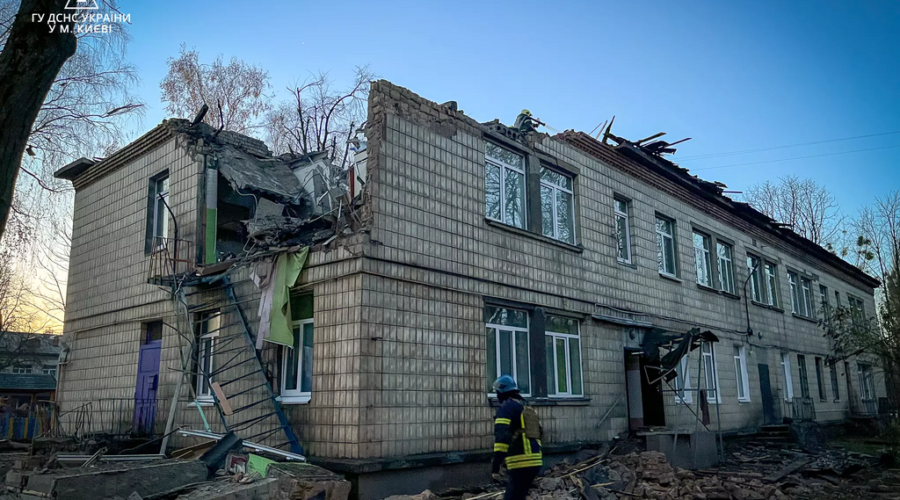Almost two years after Russia launched a full-scale invasion of Ukraine, the war in the Eastern European country has turned into a de facto semi-frozen conflict. Stuck in what appears to be a positional warfare along the 600-mile-long frontline, neither Russian nor Ukrainian forces seem to have capacity to make a significant breakthrough.
But could Moscow and Kyiv sign a ceasefire or a peace agreement in the near future?
In May 2023, former US Secretary of State Henry Kissinger – Vladimir Putin’s “old friend” – said that peace talks between Russia and Ukraine could begin by the end of the year. At this point, however, such an outcome does not seem very realistic, although some political circles in the West are reportedly pressuring Kyiv to consider a peace deal with Moscow that would involve at least some territorial concessions to the Russian Federation.
Ukrainian President Volodymyr Zelensky claims that “nobody puts pressure on Kyiv for sitting at the negotiation table with Russia and give something away”, while Putin insists that Russia “has never canceled peace talks with Ukraine”. Under the current circumstances, where a stalemate seems to have become reality, it is entirely possible that the West will attempt to find a way to force both Russia and Ukraine to de facto freeze the conflict.
That does not necessarily mean that the two countries’ representatives will sign any agreements, since such a move would not be politically beneficial for Russian and Ukrainian elites. If Zelensky accepted any territorial concessions to Russia, he would risk facing a rebellion at home. For Putin, who has a presidential election in March 2024, it would be unacceptable to make any “goodwill gestures” to Ukraine, at least until after the vote.
In the mid-term, it is not improbable that Moscow and Kyiv, as well as their Western partners, will make a tacit behind-the scenes deal to ease tensions, without signing any documents. But even if they reach a ceasefire agreement, there is no guarantee that a potential truce will actually hold. Instead, Russia and Ukraine may remain engaged in a low-scale positional warfare for years, as was the case after they signed the Minsk agreements that effectively ended the “hot phase” of the Donbass war.
However, in the coming weeks (and potentially even months) Russia will likely continue attempting to achieve at least some tactical victories in southeastern Ukraine, given that it became obvious that the Ukrainian counteroffensive has failed, and that Kyiv is unlikely to be in a position to resume its large-scale military offensive operations in the foreseeable future.
If Russian forces manage to seize the town of Avdiivka in the Donbass before the presidential election, pro-Kremlin propaganda will undoubtedly portray this as a huge victory for Putin. But the fact that Kyiv is not using Avdiivka for propaganda purposes – which was the case when it came to the battle for Bakhmut – and is not talking about it as another “fortress”, indicates that a potential Ukrainian withdrawal from the town will not have serious consequences for the country’s military and political leadership.
For Ukraine, at least at this point, it is more important to avoid any internal turbulence and power struggles, and also to ensure flawless weapons supply from the West. It is not a secret that the Eastern European nation is facing ammunition shortages, which is one of the reasons why it would benefit from a potential ceasefire deal.
But is the Kremlin willing to give Ukraine time to consolidate and prepare for another round of fighting?
The fact that Russia, on November 25, launched its most intense drone attack on Kyiv since the beginning of its full-scale invasion in 2022, indicates that this winter it might once again strike Ukrainian energy infrastructure. But since Ukraine, on November 26, proved that its drones and missiles can reach Moscow, as well as other Russian cities, it is almost certain that the war-torn country will respond severely to a potential Russian massive bombing campaign.
Therefore, despite various attempts to ease tensions, the Ukraine war is unlikely to end in the near future. Given that the West, particularly the United States, has significantly delayed and reduced direct budget support for the former Soviet republic, it is not improbable that Russia, in the coming months, might attempt to seize more Ukrainian territory.
That, however, does not mean that Moscow will achieve any of its strategic goals anytime soon, if at all. Russia can resolve the conflict in its favor only if it removes the entire country’s political and military leadership and completely changes its approach vis-à-vis Ukraine, or if the West, for whatever reasons, decides to abandon the Eastern European nation.
At this point, neither option sounds realistic, which means that a long war of attrition lies ahead of Ukraine and Russia.
Image: A kindergarten №295 in Kyiv (Solomianskyi District), damaged by wreckage of a downed drone during massive Russian attack on the city in the night on 25 November 2023. Image by dsns.gov.ua

